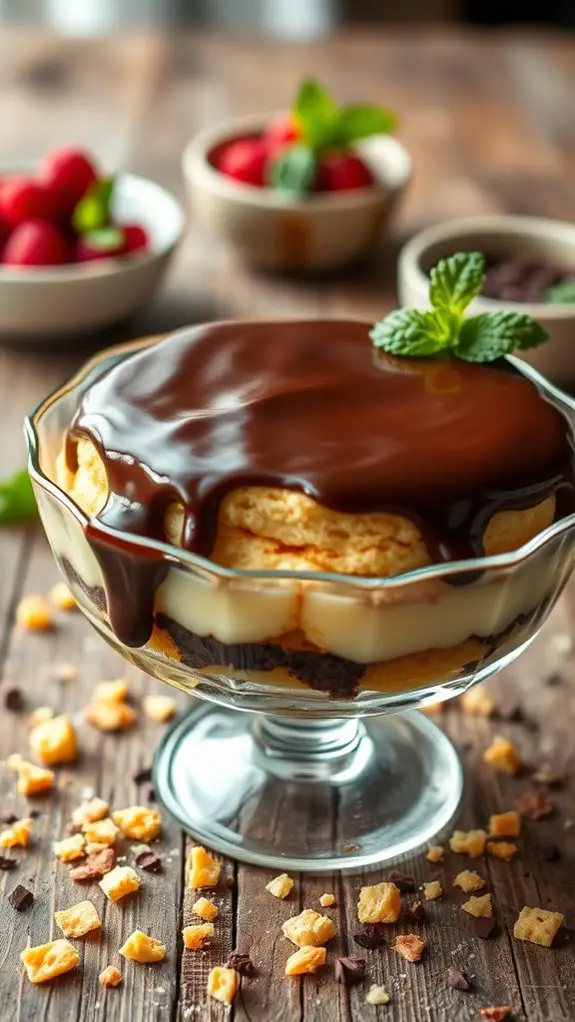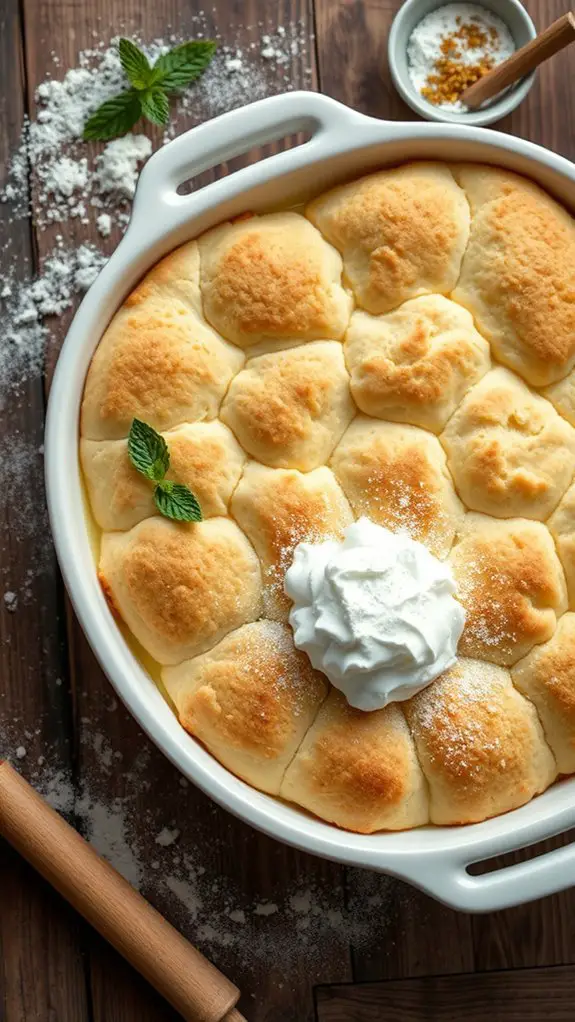You'll be surprised by how a simple biscuit can transform into a decadent, creamy dessert. Biscuit pudding's origins trace back to the 19th century South, where it became a beloved comfort food. The flaky biscuits soak up a rich custard, creating a unique texture that melts in your mouth. While the traditional recipe is delightful, modern variations now incorporate spices and dried fruits, elevating this classic dish. Discover the secrets of this Southern specialty and reveal a world of flavors.
History

Although the origins of biscuit pudding aren't entirely clear, it's believed to have emerged as a traditional dessert in the Southern United States during the 19th century.
The dish evolved from earlier pudding recipes that utilized biscuits or other bread-based ingredients. Over time, biscuit pudding variations emerged, with recipes calling for ingredients like raisins, spices, and even savory components.
While the specific origins remain uncertain, the popularity of this comforting dessert grew, solidifying its place in Southern culinary traditions.
The versatility of biscuits allowed bakers to experiment, leading to diverse interpretations of the classic biscuit pudding.
Recipe

Biscuit pudding is a classic comfort food dish that combines the flaky texture of biscuits with the rich, creamy custard-like filling. This dish is perfect for a cozy Sunday brunch or a decadent dessert.
To make this dish, you'll need to prepare a homemade biscuit dough and a creamy custard-style filling. The contrast between the light, flaky biscuits and the smooth, indulgent filling creates a delightful balance of flavors and textures.
Ingredients:
- 2 cups all-purpose flour
- 2 teaspoons baking powder
- 1/2 teaspoon salt
- 6 tablespoons unsalted butter, chilled and cubed
- 3/4 cup cold milk
- 3 large eggs
- 1 cup granulated sugar
- 2 cups whole milk
- 1 teaspoon vanilla extract
Directions:
In a large saucepan, whisk together the eggs, sugar, and 2 cups of whole milk. Cook over medium heat, stirring constantly, until the mixture thickens and coats the back of a spoon.
Remove from heat and stir in the vanilla extract. Pour the custard into a 9×13 inch baking dish and set aside.
Tips:
Be certain to use chilled butter and cold milk for the biscuit dough to guarantee a flaky and tender texture.
Additionally, you can experiment with different flavor variations, such as adding cinnamon or lemon zest to the custard.
Serve the biscuit pudding warm, with a dollop of whipped cream or a sprinkle of powdered sugar, for a truly indulgent experience.
Nutritional Guide
Preparing a nutritious biscuit pudding requires understanding its key nutritional components. The caloric content of this dish is moderate, with the primary sources being the biscuits, milk, and any added sweeteners.
However, the ingredients also offer beneficial nutrients. The biscuits provide complex carbohydrates, while the milk contributes protein, calcium, and vitamin D.
Depending on the recipe, fruit or nuts may add dietary fiber, vitamins, and healthy fats. To optimize the nutritional profile, consider using whole-grain biscuits, low-fat or non-fat milk, and minimal added sugar.
Final Thought
The biscuit pudding, when crafted thoughtfully, can serve as a comforting and nourishing dessert.
Explore the versatility of biscuit variations, from flaky and buttermilk to cheddar and herb, to create unique and impressive textures and flavors.
As dessert trends shift towards healthier options, the biscuit pudding offers a balance of indulgence and nutrition, satisfying cravings while providing essential nutrients.
Consider incorporating whole grains, fresh fruits, or nutty toppings to elevate the dish's nutritional profile.
With a focus on quality ingredients and attentive preparation, the biscuit pudding can become a go-to treat that delights the senses and nourishes the body.